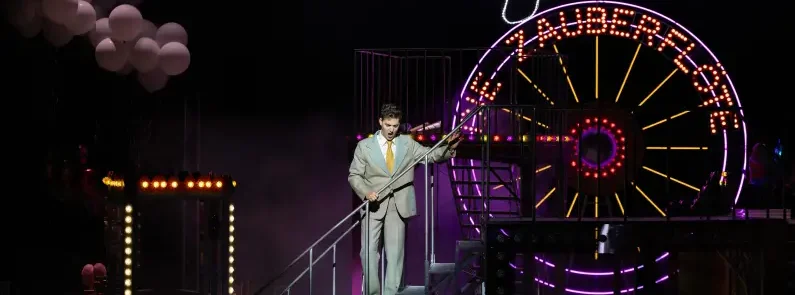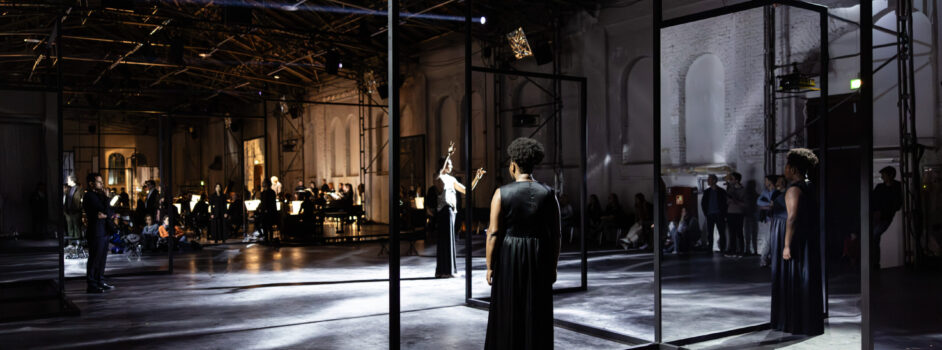Plus de détails
Bordeaux, auditorium Henri Dutilleux. 26-IX-2013. Henry Purcell (1659-1695) : Music for the Funeral of Queen Mary. Gustav Mahler (1860-1911) : Symphonie n°2 « Résurrection ». Henriette Bonde-Hansen, soprano ; Nathalie Stutzmann, contralto. Orfeón pamplonés (chef de choeur : Igor Ijurra), Choeur de l’Opéra national de Bordeaux (chef de choeur : Alexander Martin), Orchestre national Bordeaux-Aquitaine, direction : Paul Daniel
 Paul Daniel made a curious choice for his first concert as musical director of the Orchestre National Bordeaux-Aquitaine: a Purcell–Mahler pairing, which started with a funeral service and ended with a mystical prayer about the meaning of life. A more optimistic program might have been more appropriate, but, regardless of the works chosen, the musical result of the evening promises a bright future for the ONBA and its new conductor.
Paul Daniel made a curious choice for his first concert as musical director of the Orchestre National Bordeaux-Aquitaine: a Purcell–Mahler pairing, which started with a funeral service and ended with a mystical prayer about the meaning of life. A more optimistic program might have been more appropriate, but, regardless of the works chosen, the musical result of the evening promises a bright future for the ONBA and its new conductor.
The concert began with a discreet but dramatic effect: the brass quartet (plus drum) for the Music for the Funeral of Queen Mary started quite modestly backstage; then, with each entrance, advanced until they were fully visible and audible. The choir (for this work, only the Opéra choir, in a reduced version) adapted well to the restrained vocal production required. The full orchestra remained in darkness throughout.
When the first chord of Mahler's Symphony no. 2 was played, fortissimo, spotlights at full power created quite a dramatic effect. The audience was instantly pressed back against their seats by the power of the ONBA's sound at its fullest. Admittedly, the new auditorium's acoustics are flattering, and afford the musicians a decent place to play.
Tackling Mahler, Paul Daniel is a bit like Bernstein, with touches of Boulez and Harnoncourt. First, he relies on his ability to grasp this work, which is of truly epic scale, as a whole. He finds the links among movements, and among the different parts of each movement, and unifies them. Second, he achieves perfect acoustic balance throughout, as well as clearly legible polyphony. Even where others tend to produce symphonic magma, Daniel always remains the master of his new musical forces. Third, while Daniel's attack and articulation are almost too emphatic, he completely avoids any excess sentimentality. resulting in a brisk and lively Mahler. Sometimes his sound is a little too dry, and the strings lack a velvety quality. But no one crafts a perfect orchestral sound in a day. The choir, which for the Mahler combined the choirs of the Opera and the Orféon Pamploné, performed honorably a part that is as short as it is difficult. However, it is unfortunate that the bass singers were standing, as always nowadays, in the back of the choir, far away from the conductor and the audience. This upset the balance among the voices, with the sopranos being too ever-present. Last but not least, the two soloists deserve to be mentioned: Henriette Bonde-Hansen, with her stratospheric high notes, and Nathalie Stutzmann, who gave a deeply moving and entirely unaffected Urlicht.
Paul Daniel © Frances Andrijich
Plus de détails
Bordeaux, auditorium Henri Dutilleux. 26-IX-2013. Henry Purcell (1659-1695) : Music for the Funeral of Queen Mary. Gustav Mahler (1860-1911) : Symphonie n°2 « Résurrection ». Henriette Bonde-Hansen, soprano ; Nathalie Stutzmann, contralto. Orfeón pamplonés (chef de choeur : Igor Ijurra), Choeur de l’Opéra national de Bordeaux (chef de choeur : Alexander Martin), Orchestre national Bordeaux-Aquitaine, direction : Paul Daniel







